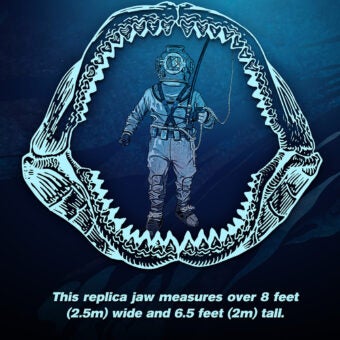-
Size
1.5 inches (4 cm) -
Diet
Zooplankton, small insects, detritus -
Range
North America and South America -
Habitat
Vegetated ponds, lakes, backwaters, quiet pools
Physical Characteristics
- Mosquitofish are about 1.5 inches (4 cm) in length with a prominent round belly and a relatively large head that is flattened on the upper surface.
- Its small mouth is upturned and protrusible. The eyes are large relative to the body.
- Coloration is greenish-olive to brown above, gray-blue on the sides and silvery-white below.
- There is a characteristic pattern of small, diamond-shaped markings on its body formed by the dark pigment on the edges of the scales.
- Small dark dots are usually present on the body and tail.
Diet / Feeding
- Feeds on zooplankton, small insects and detritus.
- It is believed to prey heavily on mosquito larvae, hence its name.
Range / Habitat
- Mosquitofish occur in North and Central America in the Mississippi as well as in the Gulf of Mexico drainage.
- These fish have been introduced very widely throughout the world.
- This species is found in both standing and flowing water habitats and is abundant in the lower reaches of streams.
- Most common in vegetated ponds, lakes, backwaters and quiet pools.
- Mosquitofish will also inhabit brackish water areas of salt marshes.
Reproduction & Growth
- This species is viviparous. The female gives birth to 60 to 300 young after a gestation period of about 24 days.
- The male’s anal fin is elongated and serves to transfer sperm to the female during breeding.
Conservation Status
- “Least Concern” on the IUCN Red List.
Additional Information
- Mosquitofish have been intentionally and unintentionally introduced throughout the world. Introductions began more than 100 years ago as a means of controlling mosquitoes.
- Due to these introductions, it is considered by some to be the single most abundant freshwater fish in the world.
- The female is larger than the male.
- This species is tolerant of a wide range of temperature and salinity conditions. It is known to enter a period of dormancy in colder months.
- Mosquitofish may live up to three years.
- Sometimes used as live food for carnivorous aquarium fish.







